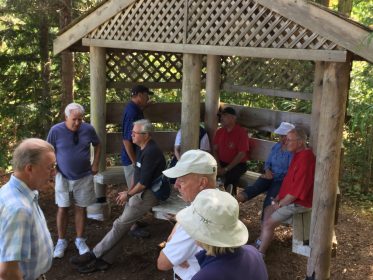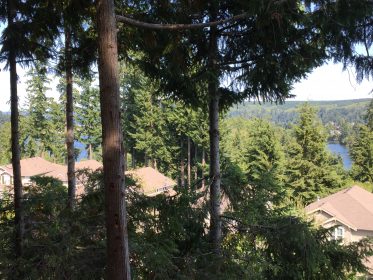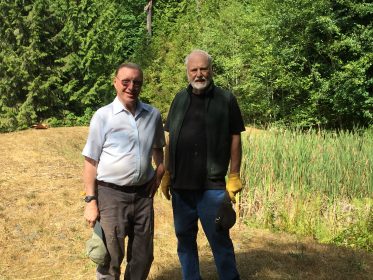From the Seattle Department of Transportation-
It’s that time of year again: Yes, we’re facing the return of the Western tent caterpillars. Their unsightly nests clutter trees, shrubs, providing them protection from predators ( birds and bats, to name a couple), as they happily munch away. The creatures, also known as Malacosoma californium , hatch in the spring when new buds are forming and spin their webs on tree branches and shrubs.
As recently noted in the local print and broadcast media, Seattle and Puget Sound regions have experienced an increase in recent years in the Western tent caterpillar population. Populations change from year to year-they can be high for several years then become very low. The good news is that a healthy tree or shrub can generally tolerate a total defoliation without suffering permanent damage. The bad news is that in years with high populations, these critters can be a real nuisance.
The Life Cycle
The egg masses are visible in winter, are grayish-brown and about one inch long. As soon as the eggs hatch in April or May, the caterpillars begin eating leaves and create “tents” – white, silky shelters that cover the forks and tips of tree branches and shrubs. They feed during the daylight and return to their tents at night.
The caterpillars are easy to recognize. They have a yellow checkered pattern with a blue dotted line down their backs, and can be three inches long when mature. The caterpillars molt four times over a period of five or six weeks, then stop eating. They choose a place to spin a cocoon and lay their eggs, and moths emerge about two weeks later. The adult moths mate immediately, lay eggs, and die a few days later; the eggs winter over until spring, when the whole process begins again.
What to Do
Many city departments use an Integrated Pest Management (IPM) approach when dealing with Western Ten Caterpillars. Control measures are only considered when population levels are extremely high, and other factors such as high public use combine to make control necessary. In those cases, mechanical means such as hand pruning or picking the webs from branches are used. Chemical controls for tent caterpillars are not used as they may be harmful to beneficial insects and birds.
While unpleasant creatures, they are not harmful to people. Natural predators include many garden birds, wasps and ground beetles. Homeowners who see infestations on their property should watch the number of tents forming and monitor the leaf damage.
Individual tents can be removed by pruning in the early morning and evening when the temperature is cool and caterpillars are inside them ( a pole pruner is useful for high branches). Put pruned nests in a bucket of soapy water or seal them in a plastic bag and crush it. Do not remove large branches or perform excessive pruning as a means of caterpillar control- you may do more damage to the tree by pruning than the caterpillars would do by defoliating the branches.
To view pictures of Malacosoma californium copy and paste the following link into your browser.
https://commons.m.wikimedia.org/wiki/Category:Malacosoma_californicum_(caterpillar)#/media/File%3AWestern_tent_caterpillars_Malacosoma_californicum_in_Joshua_Tree_NP_at_sunset.jpg



